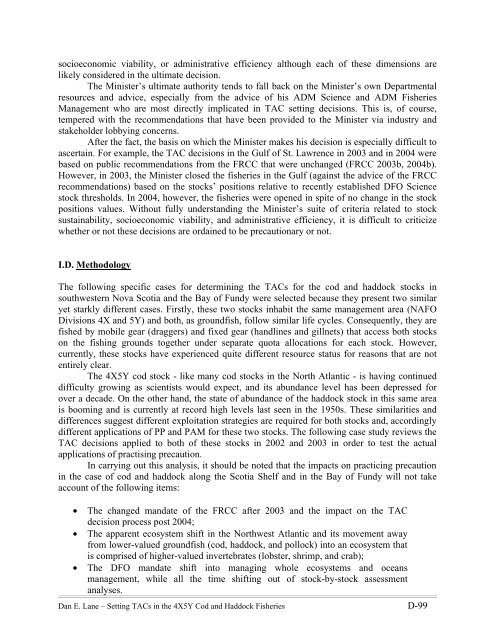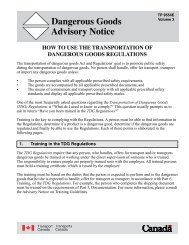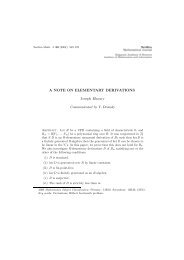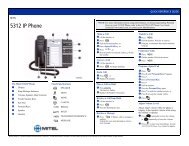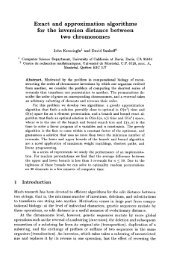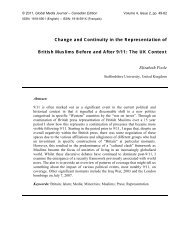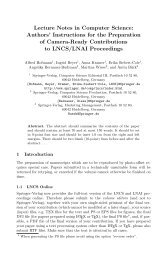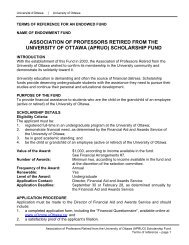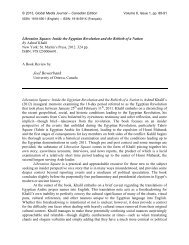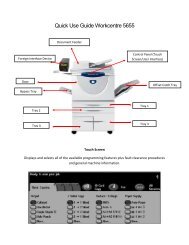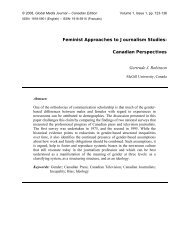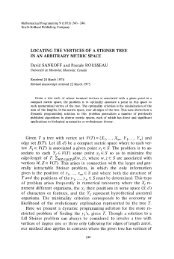PRACTICING PRECAUTION and ADAPTIVE MANAGEMENT ...
PRACTICING PRECAUTION and ADAPTIVE MANAGEMENT ...
PRACTICING PRECAUTION and ADAPTIVE MANAGEMENT ...
- No tags were found...
Create successful ePaper yourself
Turn your PDF publications into a flip-book with our unique Google optimized e-Paper software.
socioeconomic viability, or administrative efficiency although each of these dimensions arelikely considered in the ultimate decision.The Minister’s ultimate authority tends to fall back on the Minister’s own Departmentalresources <strong>and</strong> advice, especially from the advice of his ADM Science <strong>and</strong> ADM FisheriesManagement who are most directly implicated in TAC setting decisions. This is, of course,tempered with the recommendations that have been provided to the Minister via industry <strong>and</strong>stakeholder lobbying concerns.After the fact, the basis on which the Minister makes his decision is especially difficult toascertain. For example, the TAC decisions in the Gulf of St. Lawrence in 2003 <strong>and</strong> in 2004 werebased on public recommendations from the FRCC that were unchanged (FRCC 2003b, 2004b).However, in 2003, the Minister closed the fisheries in the Gulf (against the advice of the FRCCrecommendations) based on the stocks’ positions relative to recently established DFO Sciencestock thresholds. In 2004, however, the fisheries were opened in spite of no change in the stockpositions values. Without fully underst<strong>and</strong>ing the Minister’s suite of criteria related to stocksustainability, socioeconomic viability, <strong>and</strong> administrative efficiency, it is difficult to criticizewhether or not these decisions are ordained to be precautionary or not.I.D. MethodologyThe following specific cases for determining the TACs for the cod <strong>and</strong> haddock stocks insouthwestern Nova Scotia <strong>and</strong> the Bay of Fundy were selected because they present two similaryet starkly different cases. Firstly, these two stocks inhabit the same management area (NAFODivisions 4X <strong>and</strong> 5Y) <strong>and</strong> both, as groundfish, follow similar life cycles. Consequently, they arefished by mobile gear (draggers) <strong>and</strong> fixed gear (h<strong>and</strong>lines <strong>and</strong> gillnets) that access both stockson the fishing grounds together under separate quota allocations for each stock. However,currently, these stocks have experienced quite different resource status for reasons that are notentirely clear.The 4X5Y cod stock - like many cod stocks in the North Atlantic - is having continueddifficulty growing as scientists would expect, <strong>and</strong> its abundance level has been depressed forover a decade. On the other h<strong>and</strong>, the state of abundance of the haddock stock in this same areais booming <strong>and</strong> is currently at record high levels last seen in the 1950s. These similarities <strong>and</strong>differences suggest different exploitation strategies are required for both stocks <strong>and</strong>, accordinglydifferent applications of PP <strong>and</strong> PAM for these two stocks. The following case study reviews theTAC decisions applied to both of these stocks in 2002 <strong>and</strong> 2003 in order to test the actualapplications of practising precaution.In carrying out this analysis, it should be noted that the impacts on practicing precautionin the case of cod <strong>and</strong> haddock along the Scotia Shelf <strong>and</strong> in the Bay of Fundy will not takeaccount of the following items:• The changed m<strong>and</strong>ate of the FRCC after 2003 <strong>and</strong> the impact on the TACdecision process post 2004;• The apparent ecosystem shift in the Northwest Atlantic <strong>and</strong> its movement awayfrom lower-valued groundfish (cod, haddock, <strong>and</strong> pollock) into an ecosystem thatis comprised of higher-valued invertebrates (lobster, shrimp, <strong>and</strong> crab);• The DFO m<strong>and</strong>ate shift into managing whole ecosystems <strong>and</strong> oceansmanagement, while all the time shifting out of stock-by-stock assessmentanalyses.Dan E. Lane – Setting TACs in the 4X5Y Cod <strong>and</strong> Haddock Fisheries D-99


